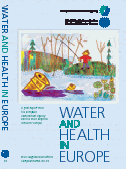Water and health in Europe. A joint report from the European Environment Agency and the WHO Regional Office for Europe

Download
Edited by Jamie Bartram, Niels Thyssen, Alison Gowers, Kathy Pond & Tim Lack
WHO Regional Publications, European Series, No. 93
2002, xxiii + 222 pages
ISBN 92 890 1360 5
CHF 50.00
Order no. 1310093
Although some aspects of water quality and supply have improved in some countries over the last decade, progress has been variable. Renewed emphasis is being placed on microbial quality and the acknowledgement of previously unrecognized and re-emerging microbial and other hazards. Many of the suggested solutions are as applicable today as they were a decade ago. However, major changes in administrative arrangements affected many countries in Europe in the 1990s, including the supply of water and sanitation services, land-use activities, pollution control and activities related to public health surveillance.
Partnerships and action were key themes of the Third Ministerial Conference on Environment and Health, held in London in June 1999. To this end the WHO Regional Office for Europe, in partnership with the United Nations Economic Commission for Europe, prepared a new Protocol on Water and Health to the 1992 Convention on the Protection and Use of Transboundary Watercourses and International Lakes. This publication provides information on many of the issues covered by the Protocol, such as adequate supplies of drinking-water and sanitation, water for irrigation and recreational use, monitoring of hazards, and public participation in decision-making. The evidence presented was collected through an extensive coordinated data-gathering process, in which many organizations and individuals throughout the European Region have cooperated.
The 21st century will present a number of challenges to the aquatic environment. A coordinated approach to data collection, processing and management in Europe to support decision-making and to improve the reliability of environmental information will be essential to meet these challenges. This publication is aimed at a broad readership and is intended to present the key issues in a format that can be appreciated by policy-makers, professionals and the general public alike.



